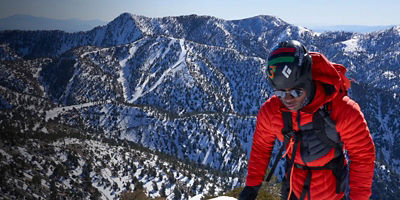
In September 2023, the Biden administration took new actions to protect America’s Arctic. This included canceling the last remaining oil and gas leases on the Coastal Plain of the Arctic National Wildlife Refuge and proposing a regulation that would add additional protections for at least 10 million acres in the National Petroleum Reserve-Alaska. The proposed rule also strengthens environmental and subsistence protections and encourages the Bureau of Land Management to pursue co-stewardship of lands, waters, and wildlife with Tribes. While this is a big first step, more is needed to fully protect this important landscape.
Alaska Wilderness League, together with many other concerned organizations, businesses, and activists, are calling on the Biden administration to take additional bold actions to durably protect this culturally and ecologically critical landscape from the threat of extraction. Add your name now to a petition calling for protections of the over 13 million acres in the Reserve and continued actions across the Arctic.
Why this Matters
If you’re one of the millions of Americans who’ve been closely following the oil-drilling saga in northern Alaska, you probably don’t need a recap of the facts. But for those who are new to the fight, allow us to provide a quick refresher.
The coastal plain of northern Alaska is home to two unfathomably huge wildlife reserves. The most well-known is the Arctic National Wildlife Refuge, a swath of undeveloped wilderness as big as South Carolina. The land serves as the main calving grounds for the Porcupine caribou herd, which the native Gwich’in people rely on for sustenance.
To the east of the Arctic Refuge lies an even bigger reserve: the National Petroleum Reserve of Alaska (NPRA), which totals 23.4 million acres compared to the Refuge’s 19 million. While the NPRA’s name belies its critical ecological value, it’s just as important a landscape for species that require large landscapes to survive, like polar bears, caribou, and wolves.
Over the past few years, both areas have come under threat from oil and gas development. In fact, the Trump administration passed legislation in 2017 that mandated lease sales in the Arctic National Wildlife Refuge. Over the last few years, the Gwich’in, alongside environmental groups like the Alaska Wilderness League (AWL), have doubled down to help protect the Refuge—with mixed results. Here’s how it’s going.
THE CURRENT SITUATION IN THE ARCTIC REFUGE
When the first lease sale for the Arctic National Wildlife Refuge went online in 2021, the folks at AWL gathered around to watch, biting their nails. But, says Alaska Director Andy Moderow (he/him), things went better than expected: Only three companies signed up for leases. One was a group run by the state of Alaska—a group AWL calls the Grim Reaper since its job is to snap up leases no one else wants. The other two companies called dibs on small tracts of land. But since 2021, both have given up their leases. That retreat is due, in part, to public outcry against Arctic drilling, says
Moderow—an outcry that AWL has played no small part in helping orchestrate. They’ve worked hard to raise awareness, and hundreds of thousands of Americans have responded by signing petitions, writing to their representatives, and voting to protect the Arctic.
“The public pressure is hard [for oil companies] to ignore when there are so many voices speaking out for a clean energy future,” Moderow says. He adds that drilling in the harsh conditions of northern Alaska is extremely expensive, especially in a place like the Arctic Refuge where there are few roads or other infrastructure for oil prospectors to rely on.
“I think they’re reading the writing on the wall that drilling in the Arctic is not a profitable play,” says Moderow. Now, he adds, the Grim Reaper is all that’s left, and it hasn’t made moves to begin drilling any time soon.
WHY WE’RE NOT IN THE CLEAR YET
That said, it’s too soon to let our guards down, says AWL board member and Gwich’in leader Jody Potts-Joseph (she/her). “The Arctic Refuge is the sacred place where life begins,” she explains. “For us as Gwich’in People, we won’t stop until we see permanent protection.” While the Biden administration has canceled all remaining leases, there’s one more lease sale that’s federally mandated to take place before the end of 2024. That could open up a whole new field of battle in the Arctic Refuge—and a level of destruction the land can’t afford.
“All it takes is one bulldozer to do a lot of damage,” Moderow says. In the meantime, AWL is working closely with Congress to gain federal protected status for the Refuge—the only thing that will truly secure the land against irreparable harm, while urging the Biden administration to take actions that stop active leases and address the Trump-era leasing plan.
“Continuing fossil fuel development in sacred lands is just going to make our climate crisis worse,” adds Potts-Joseph. This is particularly salient in Alaska, where temperatures are warming up to three times faster than the global average. “It’s better to keep [fossil fuels] in the ground and invest in renewable energy than to continue this destructive cycle,” she says. “So we really look forward to checking that last box that we’ve received permanent protection.”





















